Written by Fidgit
Haz clic aquí para leer en español
Ulysses found him busied as he sate
Before the threshold of his rustic gate;
~The Odyssey
The story of land and people are not independent, for all the advantage and struggle of such interrelation. Encountering those who live as stewards along our walk, and there are many, gives me hope. Some people are history incarnate.
Henry certainly is.
Stories of the past are in his bones, ambitions for the future in his mind. He is the perfect character to tell the story of the frontier pass Portillo/Piuquenes.

We pass him loitering in his driveway, surrounded by orchards, tucked into the back corner of hamlet Villa Veraniega, outside of Manzano Historico, Argentina. A character such as he is not to be passed by. The information and numbers shared in this post come from an afternoon of walking among his trees, collecting hazelnuts and history.
Before electricity arrived to Manzano Historico Henry was a lamplighter; in 1968 he and his wife traveled 40,000 km through the 24 provinces and 5 bordering countries of Argentina. “When I left, my friends knew where I found the best place, I would live there and they worried I would never come back. So, when I returned I told them
‘I found it. This is it.’
I have all the fruit trees you can name, growing here.”
To this day he is a gardener, tending plants and regional history alike.

About to turn 80, “for the first time,” he grins. His goal is to live to 144.
Why? Because it is a double dozen.
In these first 80, he has lived more than most would in 144 years. José de San Martín, the general credited with liberating South America from Spanish control, crossed the Piuquenes Portillo Paso four or eight times (depending on if you count them one way or round trip). Henry has crossed at least 24 times with the local mountaineering club, on foot, horse, and once in Nicanora. He knows something about everything since humans began crossing the pass and has notions as to where it might go from here.

Originally, the pass was used by the Mapuche, who called it “Uueco” (phonetic), as it was the shortest way to cross from west to east through the Andes. The valley is called Hueco, which stems from the native word for water. Today there are some five water bottling companies functioning in the area. “Our gold is water, as if we are not going to defend it. That is why we do not want mining industries to come here.”

The pass gained notoriety in 1817 when San Martin’s forces used it in the move to liberate South America from Spanish rule. Captain Jose Leon Lemos led 155 soldiers and impassioned locals over the two 13,000 ft passes, Portillo and Piuquenes, as one of six contingencies gathered and organized in Argentina over the course of two years to move through various strategic passes into Chile to combat the Royalists. After victory, they went north and joined with the Bolivar forces to free Peru.
Altogether it was a massive feat, and not just because they did not have WhatsApp group messaging to coordinate their efforts.
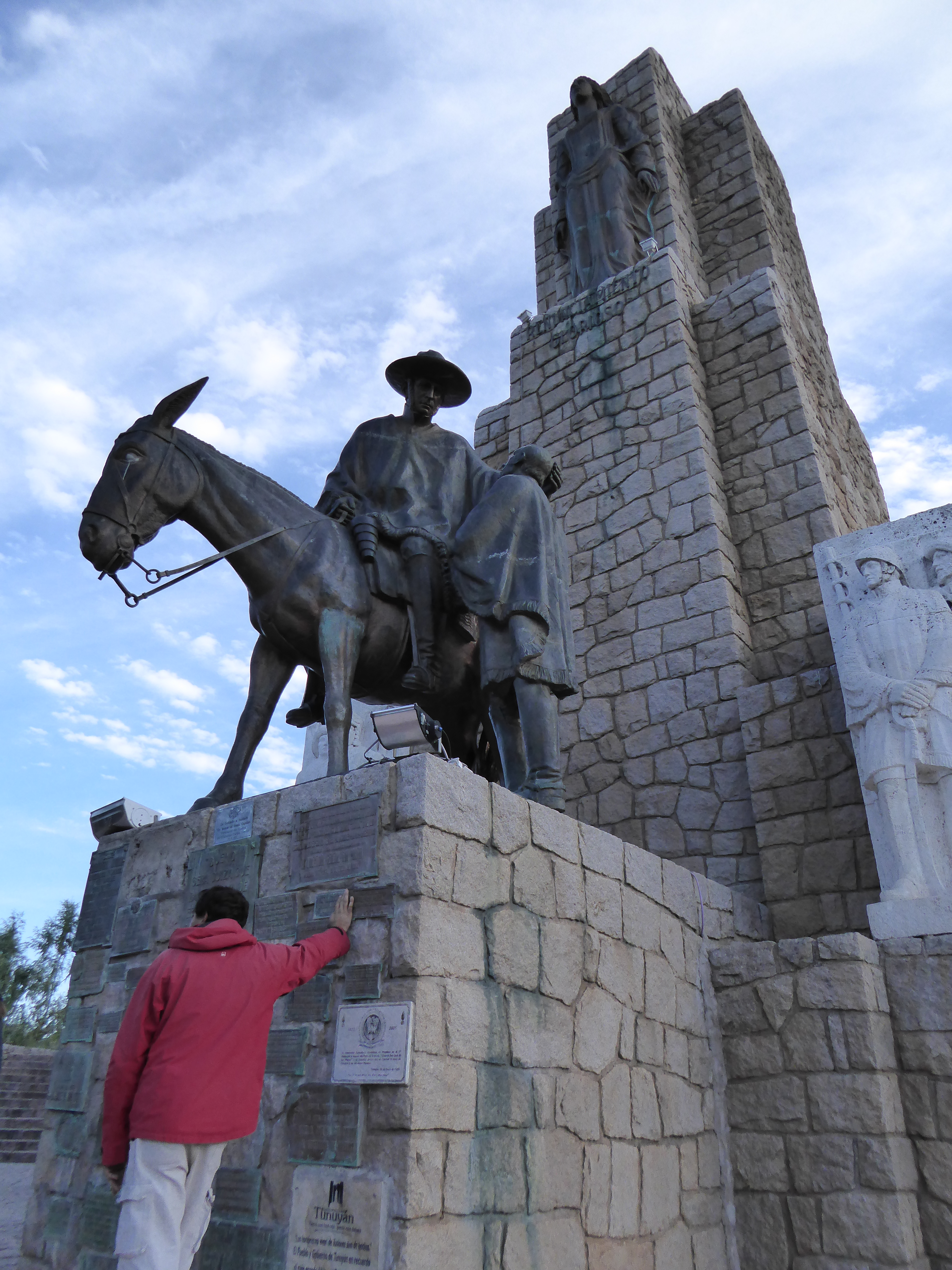
Only a few days before meeting Henry, we sat at a long table in the echoing dining hall of the remote military refuge, Refugio Militar Real de la Cruz, tucked into a river valley between those very passes. We happened to be hiking through the region on the bicentenario, 200 years since the forces moved through. These days, this valley sees at least 1000 horseback and hiking visitors each summer season, between January and March.
After that it was used by arrieros to move herds of up to 11,000 animals between Argentina and Chile. They were opposed to the building of a road, because they feared losing their livelihood, now that animals would be moved in trucks. In 1972, they ran the last herd through, because now they fly it over as frozen meat. Henry shakes his head, “progress cannot be stopped. The world can’t stop it. Much less here.”
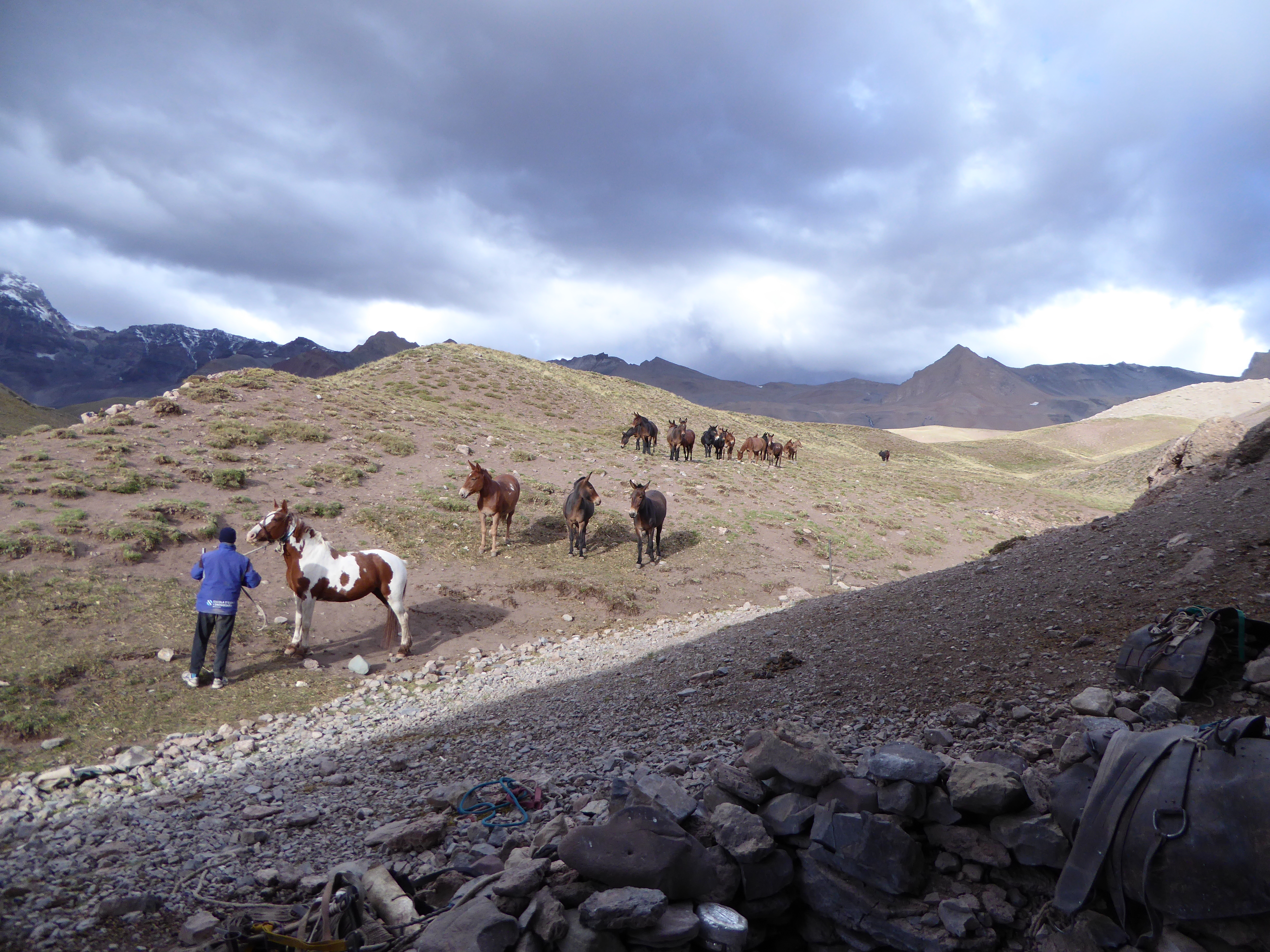
His vision is that which was held by Dr. Scaravelli before him, that a road be built through the pass. After all, it is the most direct route between Santiago, Chile and Mendoza, Argentina. Both countries have specified their interest would be in building a tourist road only, for ATVs, etc. The idea is resisted by locals, who have been told if a road is built, mining industry will come. It is also opposed by tour companies who guide cabalgata and hiking tours through the area. Henry contends that a tourist road would not adversely affect tourism opportunities, rather, increase business.
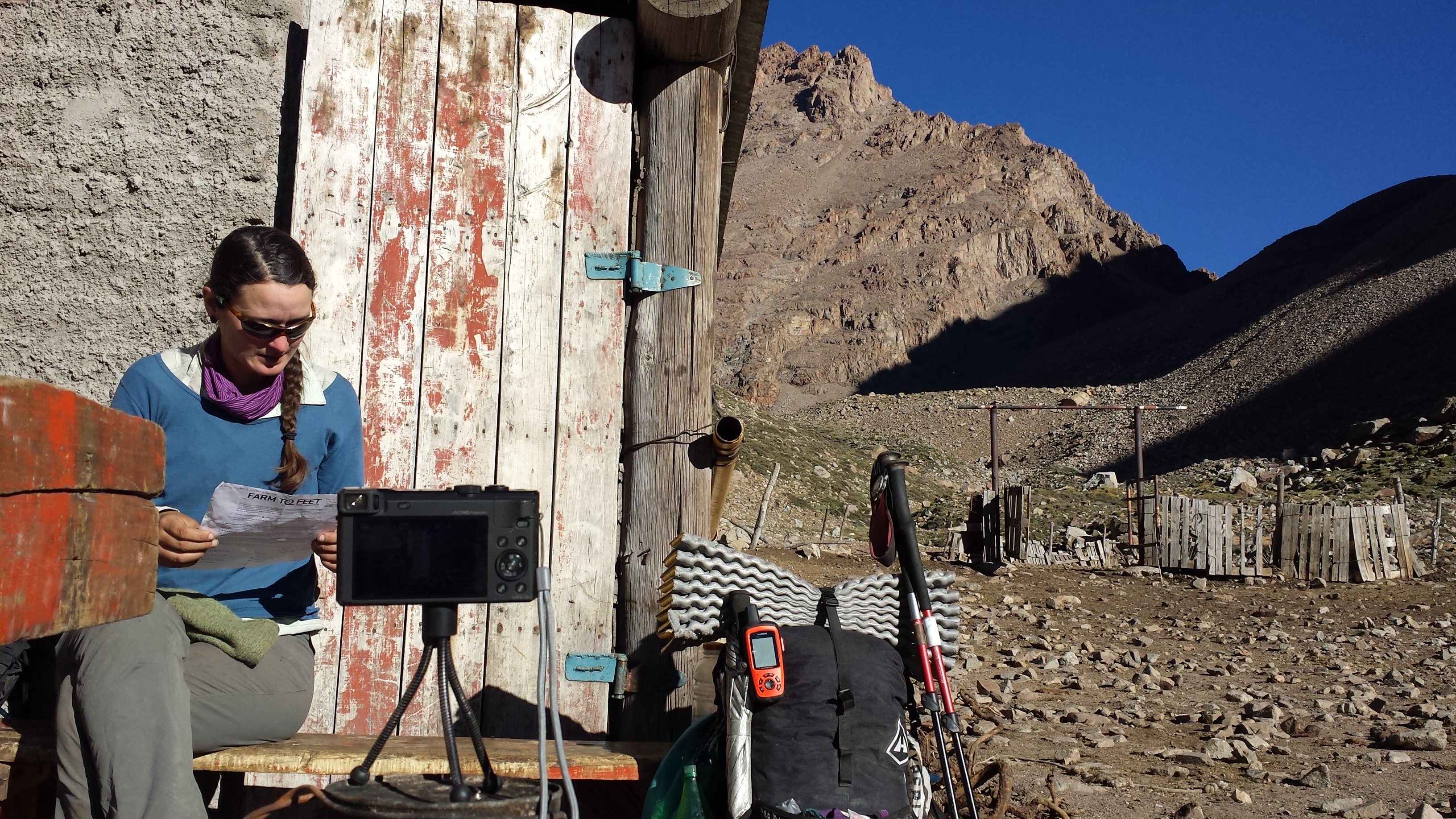
In 1946, Dr. Scaravelli convinced the Argentine army to put 12,000 men to the task of building a road up the western side of Paso Portillo. They were working “with picks, sticks, and dynamite and hauling equipment up on burros.” Upon completion of this segment of road, “five crazy men and a journalist from the Andes diary decided that Nicanora needed to get up to Portillo refuge.”
In a recording of our conversations he sings the story of that adventure.
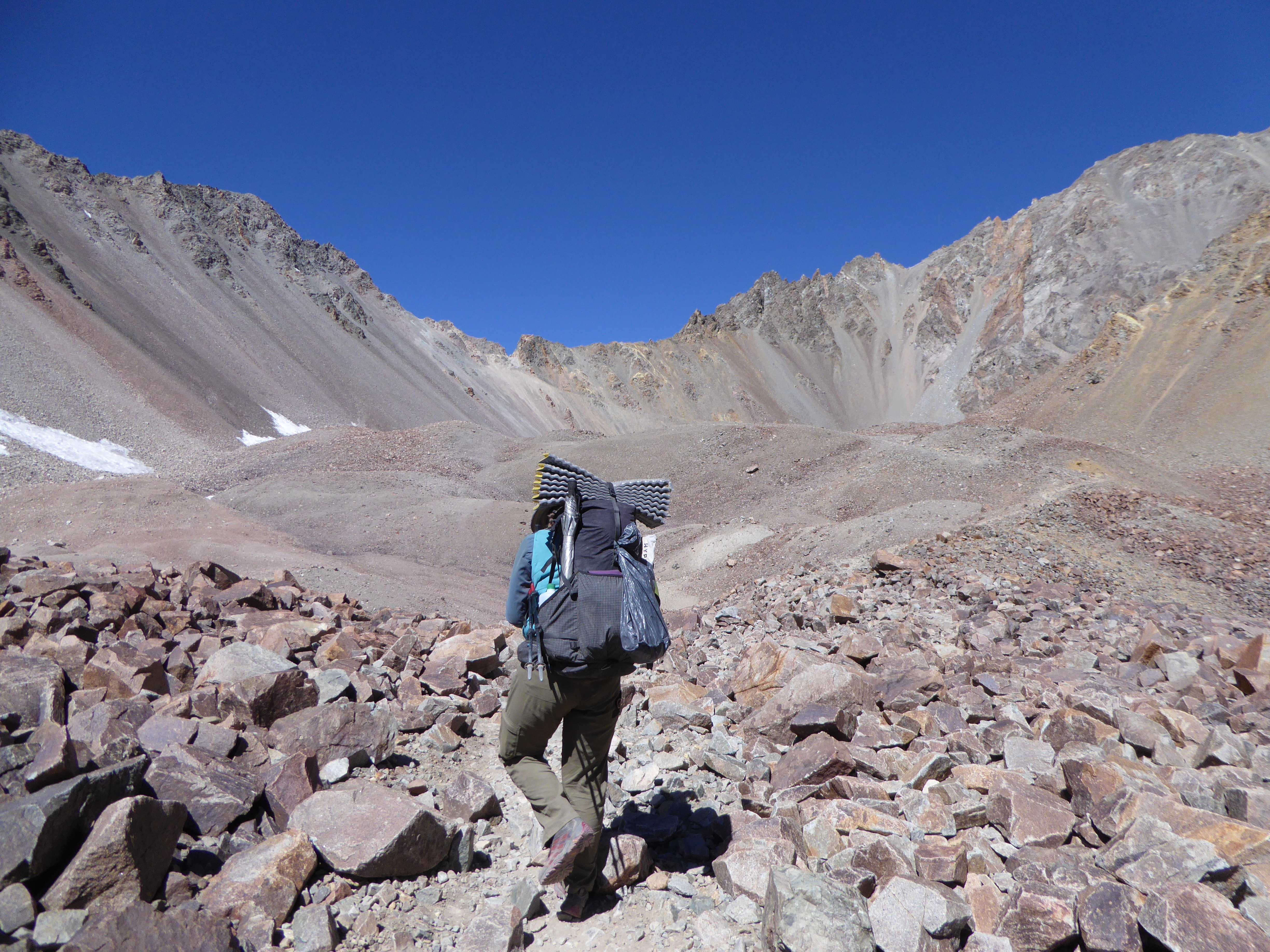
Today, Henry keeps Nicanora in fine shape in his garage, waiting until the day she can cross all the way into Chile.
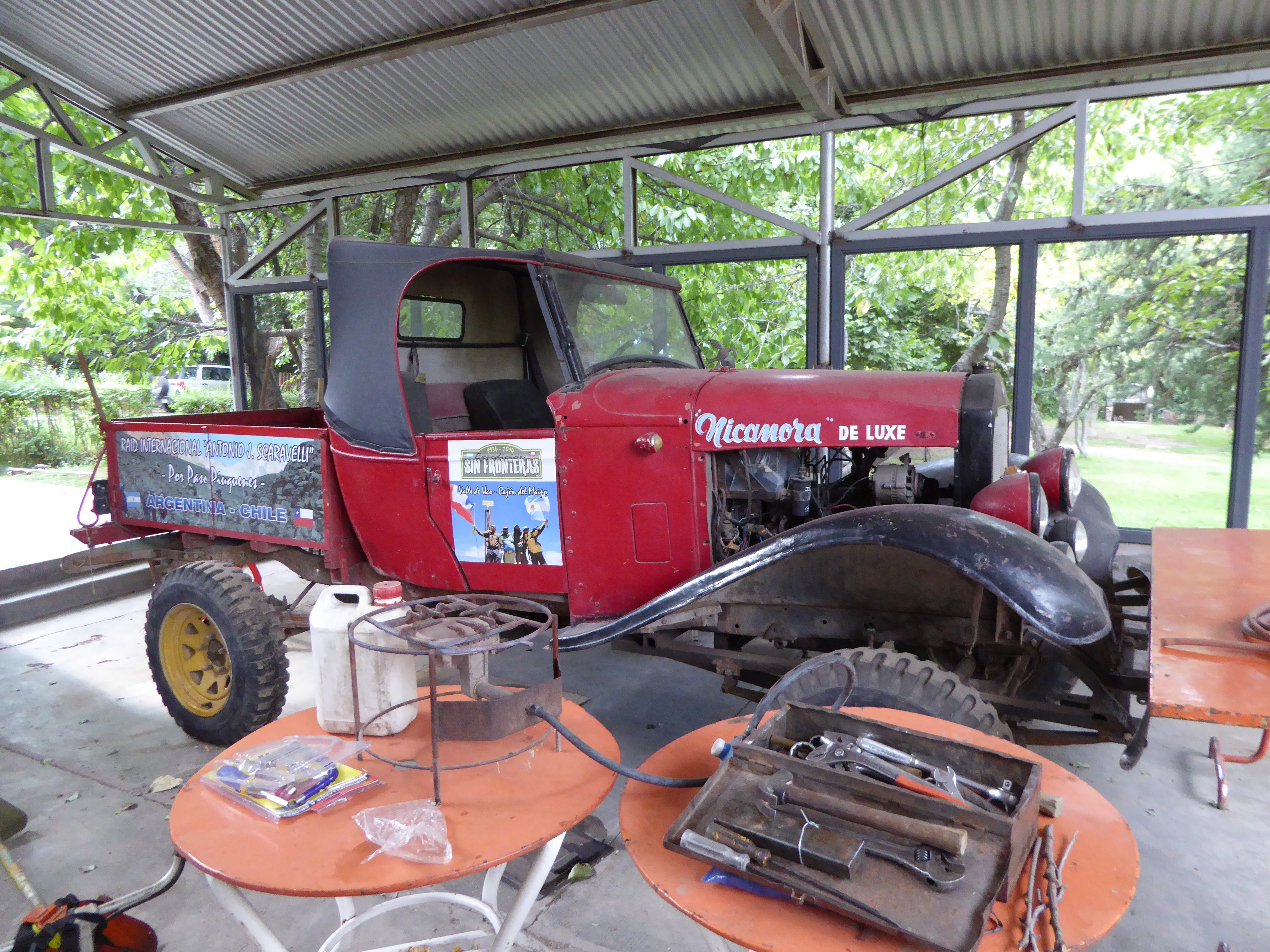
Paso Piuquenes Portillo y aquellos que escriben la historia.
Escrito por Fidgit
Ulysses lo encontró ocupado mientras él se sento
Ante el umbral de su puerta rústica;
~ La Odisea
La historia de la tierra y la gente no son independientes, para toda la ventaja y lucha de tal interrelación. Encontrar a los que viven como administradores a lo largo de nuestro camino, y hay muchos, me da esperanza. Algunas personas son la historia encarnada.
Henry ciertamente lo es.
Historias del pasado están en sus huesos, ambiciones para el futuro en su mente. Es el personaje perfecto para contar la historia del paso fronterizo Portillo / Piuquenes.

Le pasamos paseando por su camino de entrada, rodeado de huertos, escondido en la esquina trasera de la aldea Villa Veraniega, fuera de Manzano Historico, Argentina. Un personaje tal como él no debe ser pasado por alto. La información y los números compartidos en este post provienen de una tarde de caminata entre sus árboles, recolectando avellanas e historia.
Antes de que la electricidad llegara a Manzano Historico Henry era un ecendedor de lamparas; En 1968 él y su esposa viajaron 40.000 kilómetros a través de las 24 provincias y 5 países limítrofes de la Argentina. “Cuando me fui, mis amigos sabían dónde encontré el mejor lugar, viviría allí y me preocupaba que nunca volvería.
‘Lo encontré. Eso es todo.’
Tengo todos los árboles frutales que puedes nombrar, creciendo aquí.
Hasta el día de hoy es jardinero, cuidando las plantas y la historia regional por igual.
[“Cuando yo salí mis amigos creían que donde yo iba encontrar un lugar mejor para donde vivir, no volvia mas. Entonces cuando volví les dije, lo encontre. Es este. Yo tengo todas las plantas frutales que nombres”]

A punto de cumplir 80 años, “por primera vez”, sonríe. Su meta es vivir hasta 144.
¿Por qué? Porque es una doble docena.
En estos primeros 80 años, ha vivido más de lo que la mayoría en 144 años. José de San Martín, el general acreditado con la liberación de América del Sur del control español, cruzó el Piuquenes Portillo Paso cuatro u ocho veces (dependiendo de si se cuentan de ida o vuelta). Henry ha cruzado por lo menos 24 veces con el club de montañismo local, a pie, caballo, y una vez en Nicanora. Él sabe algo sobre todo desde que los seres humanos comenzaron a cruzar el paso y tiene nociones de dónde podría ir desde aquí.

Originalmente, el paso fue utilizado por los mapuches, que lo llamaron “Uueco” (fonético), ya que era el camino más corto para cruzar de oeste a este a través de los Andes. El valle se llama Hueco, que deriva de la palabra nativa para el agua. Hoy en día hay unas cinco empresas embotelladoras de agua que funcionan en la zona. “Nuestro oro es agua, como si no lo defendíéramos, por eso no queremos que las industrias mineras vayan aquí”.
[“El oro nuestro es el agua, mira si no la vamos a defender. Por eso no queremos que acá no viene ningún minero.”]

El pase ganó notoriedad en 1817 cuando las fuerzas de San Martín lo usaron en el movimiento para liberar a Sudamérica del dominio español. El capitán José León Lemos condujo a 155 soldados y apasionados locales por los dos pasos de 13.000 pies, Portillo y Piuquenes, como una de las seis contingencias que se reunieron y organizaron en Argentina durante dos años para trasladar varios pasos estratégicos a Chile para combatir a los realistas. Después de la victoria, fueron al norte y se unieron con las fuerzas de Bolívar para liberar al Perú.
En conjunto fue una hazaña masiva, y no sólo porque no tenían mensajes de grupo de WhatsApp para coordinar sus esfuerzos.

Sólo unos días antes de conocer a Enrique, nos sentamos en una larga mesa en el comedor del eco remoto refugio militar, el Refugio Militar Real de la Cruz, escondido en un valle fluvial entre esos mismos pasos. Pasamos por caminar por la región en el bicentenario, 200 años desde que las fuerzas se movieron. En estos días, este valle ve al menos 1.000 caballos y excursionistas cada temporada de verano, entre enero y marzo.
Después de eso fue utilizado por arrieros para transportar manadas de hasta 11,000 animales entre Argentina y Chile. Se oponían a la construcción de un camino, porque temían perder su sustento, ahora que los animales serían movidos en camiones. En 1972, pasaron el último rebaño, porque ahora lo vuelan como carne congelada. Henry sacude la cabeza, “No se puede frenar el progreso. El mundo no lo puede frenar. Menos aqui.”

Su visión es la que sostuvo el doctor Scaravelli antes que él, que un camino sea construido a través del paso. Después de todo, es la ruta más directa entre Santiago, Chile y Mendoza, Argentina. Ambos países han especificado que su interés sería construir una carretera turística solamente, para ATVs, etc. La idea es resistida por los locals, que se han dicho si un camino es construido, la industria de la minería vendrá. También se opone por las compañías de viaje que guían cabalgata y excursiones a pie por la zona. Henry sostiene que una ruta turística no afectaría negativamente las oportunidades de turismo, sino que incrementaría el negocio.

Un refugio alto en las montañas en honor del médico que comenzó el primer hospital en Mendoza en su garaje. Luego conseguí fondos para 2 camas. Luego construyó un hospital. El nuevo y grande hospital de Mendoza lleva su nombre.
En 1946, el Dr. Scaravelli convenció al ejército argentino de poner 12.000 hombres a la tarea de construir un camino por la parte occidental de Paso Portillo. Estaban trabajando “con palos, palos, dinamita y equipo de transporte en los burros”. Al terminar este tramo de carretera, “cinco locos con un periodista del diario de los Andes decidimos que la Nicanora tenia que llegar al refugio del Portillo.”
En una grabación de nuestras conversaciones canta la historia de esa aventura.

Hoy, Henry mantiene a Nicanora en buen estado en su garaje, esperando hasta el día en que pueda cruzar todo el camino hasta Chile.



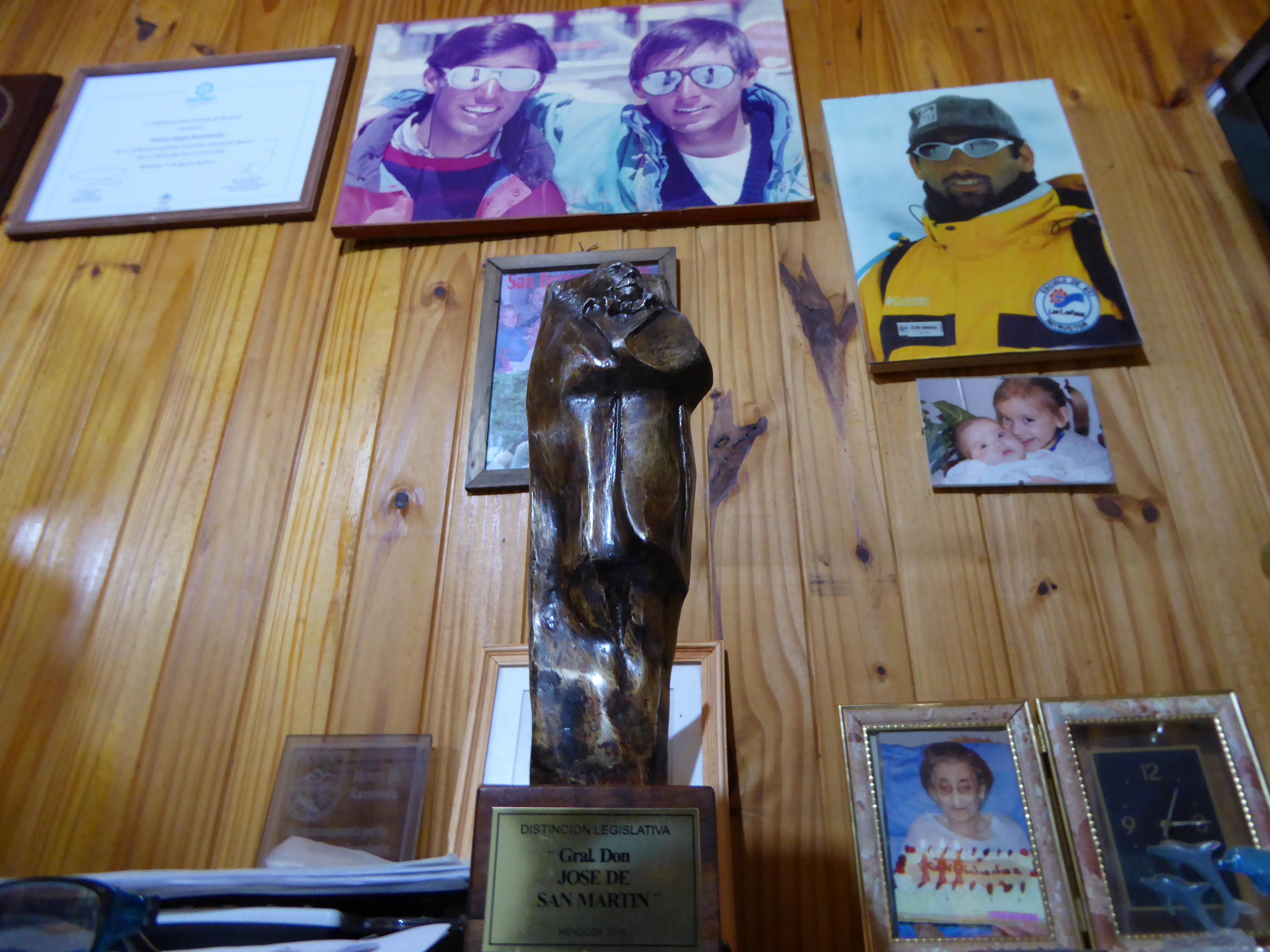
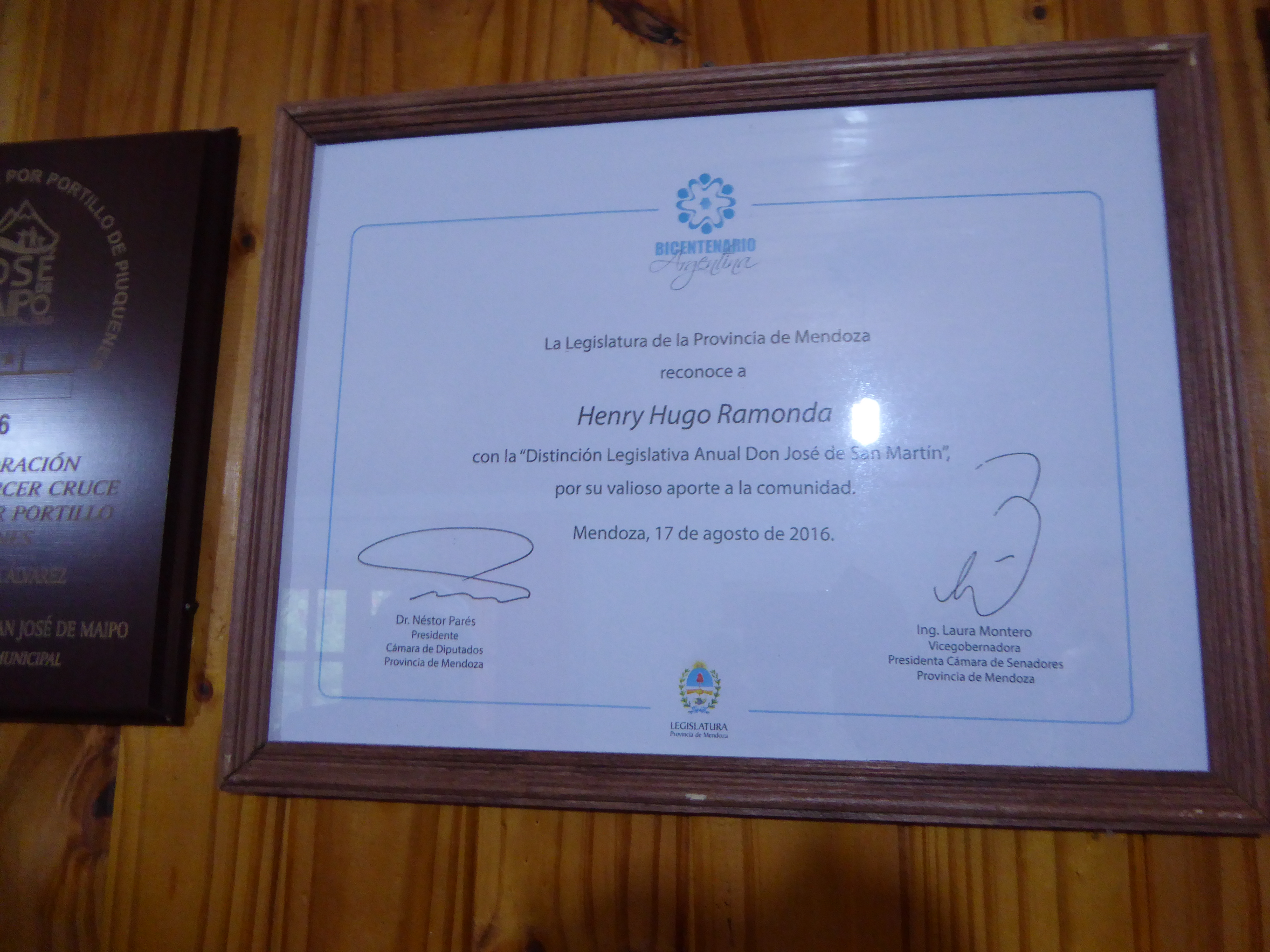
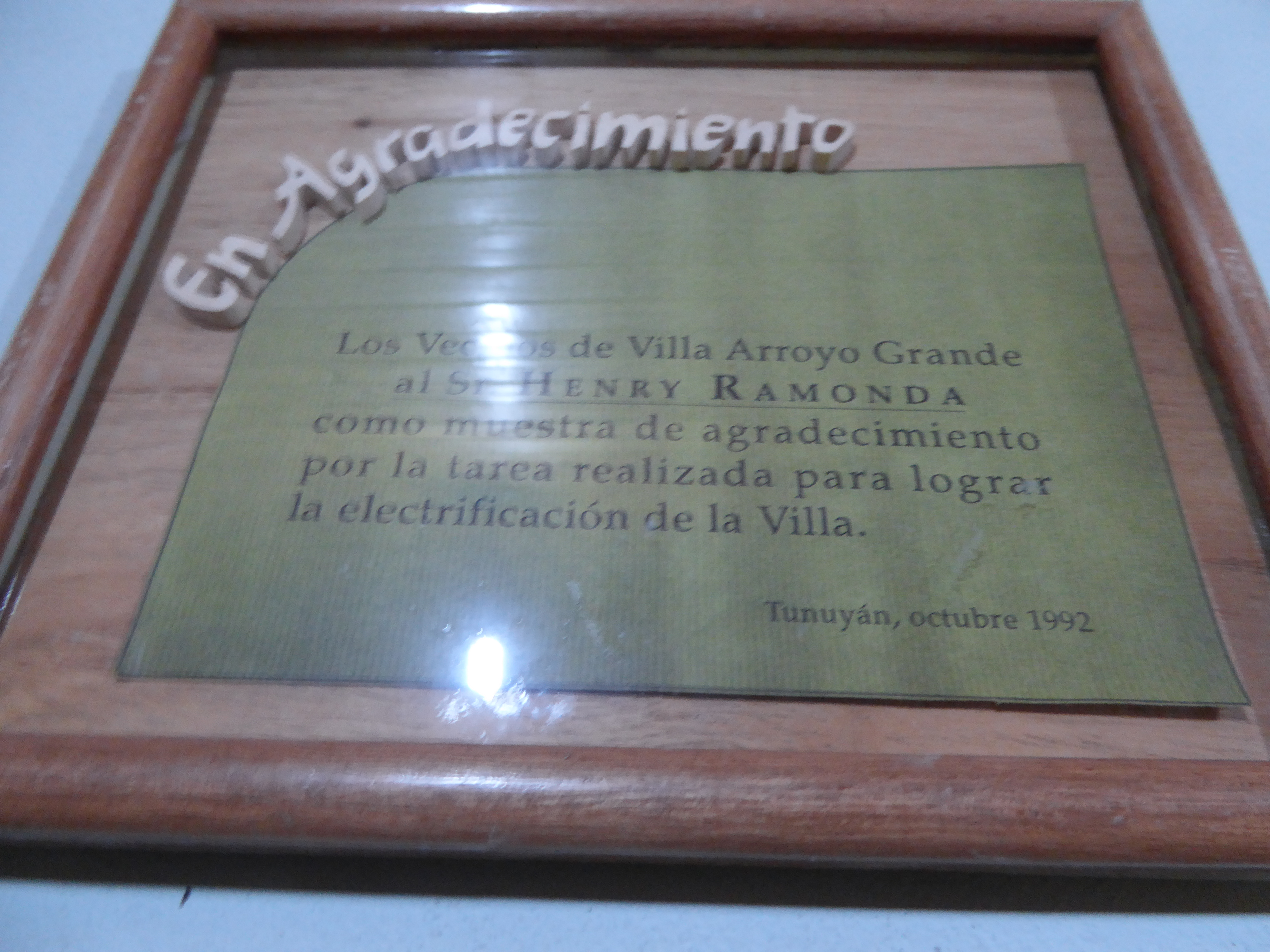
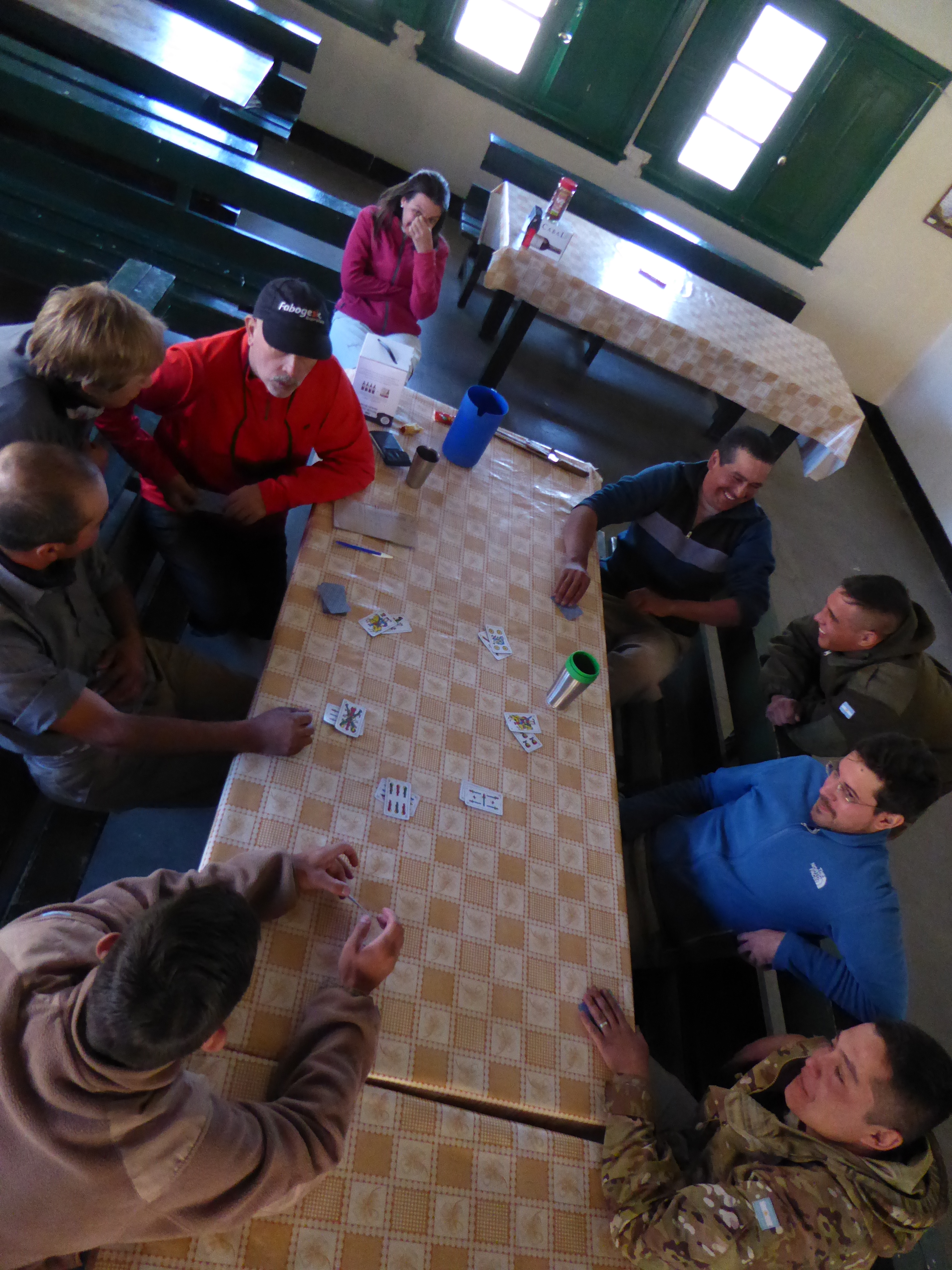
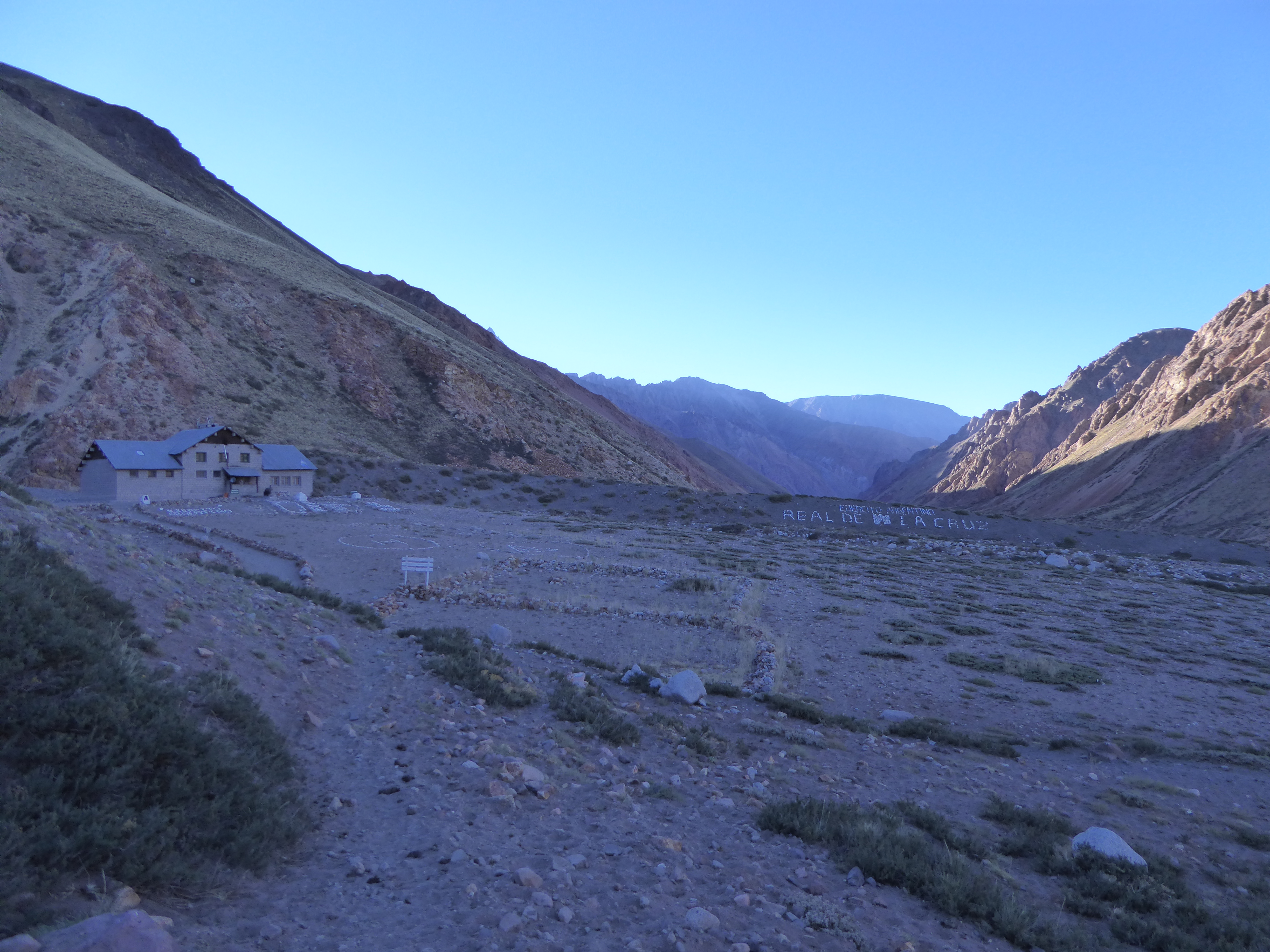
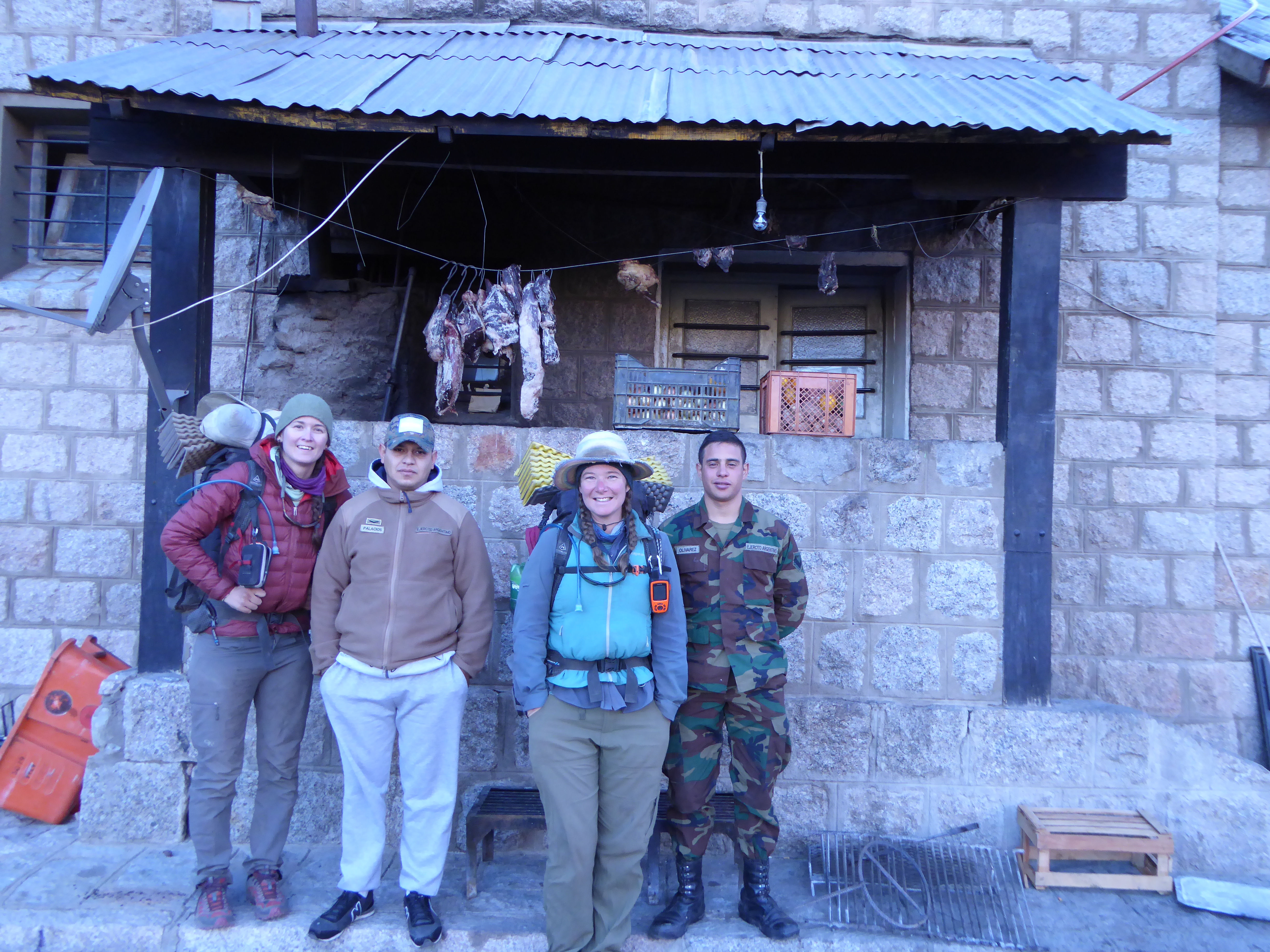




Comments (9)
WONDERFUL ?? Now THESE type of deep enchanting stories ARE The Odyssey ??
Thanks for sharing and enlightening the Happy Trails , thanks girls
Lani Smith
GDT
Alberta Canada ??
Henry sounds like a fascinating character who had to go away to discover the treasures that were back home.
That’s one cool vehicle! Also, think that fruit, at least in English, is a persimmon?? Keep up the great work!
Nice arbol mystery solving! Thank you!
Wow, thanks for your reflections on the history of this area and the personal journey of Henry. It is impressive the way you create a sense of community with new people all along your long walk.
Be careful and watch your step on those mountain passes.
Cliff and Martha Rawley
I often visit your website and have noticed that you don’t update
it often. More frequent updates will give your site higher authority & rank in google.
I know that writing articles takes a lot of time, but you can always help yourself with miftolo’s tools which will shorten the time of creating an article to a few seconds.
Thanks for the insight, spambot! We’ll stick with quality over quantity.
I believe the fruit you shared a picture of is a persimmon. I found your story because my wife and I are planning on trekking from Manzano Historico to Valle del Yeso park in Chile in January 2024.
Thank you and, LOVELY! You are headed for a marvelous region of the world with a huge invitation to slow down and engage deeply. I’ll never forget the hot springs and folks’ kindness.
Views weren’t bad, either.